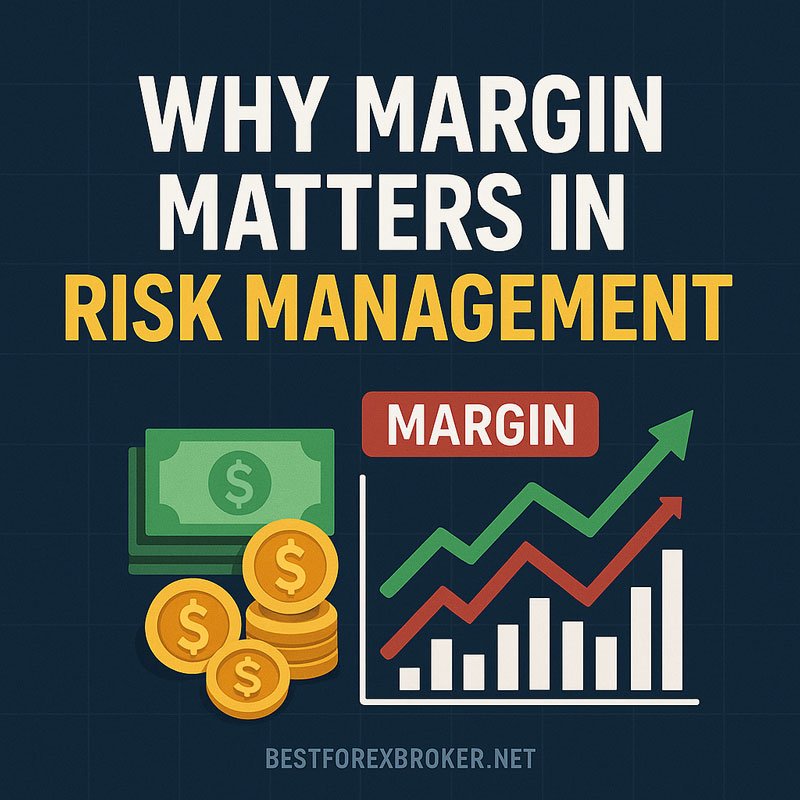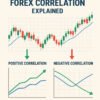Why Understanding Margin Matters
Forex trading offers the potential for profit through currency price fluctuations, but before diving into live markets, every new trader must understand one crucial concept: margin .
Margin plays a central role in leveraged trading and can make or break a trader’s success — especially for beginners who may not yet grasp its importance.
In this article, we’ll explain what margin in forex is , how it works, and why it matters. By the end, you’ll have a clear understanding of margin, leverage, margin calls, and how to use them wisely in your trading journey.
🔍 1. What Is Margin in Forex?

At its core, margin in forex trading refers to the amount of money required by a broker to open and maintain a leveraged trading position.
Think of it as a good faith deposit or collateral that allows traders to control larger positions than their actual account balance would otherwise permit.
Key Terms You Should Know:
- Used Margin : The amount of money currently tied up in open trades.
- Free Margin : The available funds you can use to open new positions.
- Equity : Your total account value, including profits and losses from open trades.
💡 Important : Margin is not a fee or transaction cost — it’s simply the portion of your account equity set aside by the broker as a deposit for opening a trade.
⚙️ 2. How Does Margin Work?
Let’s break down how margin functions in real trading scenarios.
Most forex brokers offer leverage , which allows you to trade larger volumes with a smaller capital outlay. Leverage is expressed as a ratio like 1:100 or 1:500 .
Here’s a simple example:
| Account Balance | $10,000 | |
| Leverage | 1:100 | |
| Trade Size | 1 standard lot (100,000 units of EUR/USD) | |
The broker will require only 1% of the total trade value as margin, which in this case is $1,000 .
🧠 Key Takeaway : Even though you’re trading $100,000 worth of currency, you’re only risking $1,000 from your account as margin. The rest is borrowed from the broker via leverage.
🧮 3. Types of Margin in Forex
There are several types of margin you need to be familiar with:
Required Margin / Initial Margin
This is the percentage of the total trade size that the broker requires to open a position.
Maintenance Margin
The minimum amount of equity needed to keep a position open. If your account equity drops below this level, you may receive a margin call .
Used Margin
The sum of all margins used across open positions.
Free Margin
The remaining funds in your account that are not currently tied up in trades — this is what you can use to open new positions.
Usable Margin
A combination of free margin and any unrealized profits or losses from open trades.
📌 Tip : Always check your free margin before opening new trades to avoid over-leveraging.
🛑 4. What Is a Margin Call?
A margin call occurs when your account equity falls below the maintenance margin level.
When this happens, your broker may automatically close some or all of your open positions to prevent further losses — a process known as liquidation .
Example:
You have an account balance of $5,000 and have used $4,000 in margin for open trades. Suddenly, the market moves against you, and your equity drops to $900.
If your broker’s maintenance margin is $1,000, you’ll receive a margin call , and your losing trades may be closed automatically.
🚨 Critical Note : A margin call is a red flag indicating poor risk management. It should serve as a wake-up call to reassess your trading strategy.
🔁 5. Leverage vs. Margin: What’s the Difference?
While often used interchangeably, leverage and margin are two sides of the same coin.
- Leverage = The multiplier effect on your trading power.
- Margin = The amount of capital required to use that leverage.
For instance:
- With 1:100 leverage , you only need 1% margin to open a trade.
- With 1:50 leverage , you need 2% margin .
📈 Pro Insight : Higher leverage increases both profit potential and risk. Use it wisely!
📉 6. Why Margin Matters in Risk Management

Understanding margin is essential for effective risk management in forex trading.
Here’s how margin helps you stay in control:
- Limits Overexposure : Knowing your margin requirements prevents overtrading.
- Helps Set Stop-Loss Levels : You can calculate how much you’re risking per trade.
- Prevents Margin Calls : Proper planning avoids automatic liquidation.
📊 Example : If you risk only 2% of your account on a single trade, you can better withstand market volatility without triggering a margin call.
❌ 7. Common Mistakes Traders Make with Margin
New traders often fall into these traps:
- Overleveraging – Using too much leverage without understanding the risks.
- Ignoring Margin Requirements – Not checking how much margin each trade uses.
- Trading Without a Plan – Entering trades without stop-losses or profit targets.
- Neglecting Free Margin – Trying to open more trades than your account can handle.
⚠️ Warning : One poorly managed trade can wipe out your entire account if you misuse margin.
💡 8. Tips for Using Margin Wisely
To trade safely with margin, follow these best practices:
- Start with low leverage (e.g., 1:10 or 1:20).
- Keep a healthy amount of free margin at all times.
- Monitor your account equity regularly.
- Use stop-loss orders to limit downside risk.
- Practice using a demo account before going live.
📝 Conclusion: Mastering Margin Leads to Better Trading
Margin is a powerful tool in forex trading, but it comes with responsibilities.
As a beginner, understanding how margin works gives you the foundation to trade confidently and responsibly. Always remember:
✅ Margin enables leverage
❌ Misusing margin can lead to margin calls
🎯 Smart traders respect margin and manage risk carefully
By learning to use margin wisely, you’ll be well on your way to becoming a disciplined and profitable forex trader.
🧾 Glossary
- Leverage : The ability to control large positions with a small amount of capital.
- Margin Call : A broker notification that your account lacks sufficient funds to maintain open positions.
- Free Margin : Available funds you can use to open new trades.
- Used Margin : Funds currently locked in open trades.
- Equity : Total account value including floating profits and losses.
📊 Summary Table
| Margin | Deposit required to open a leveraged trade | |
| Leverage | Multiplier that increases trading power | |
| Margin Call | Broker action when equity drops too low | |
| Free Margin | Funds available for new trades | |
| Used Margin | Funds currently used in open positions | |
📣 Final Thoughts
Understanding what is margin in forex is not just technical knowledge — it’s a survival skill for traders. Whether you’re just starting out or looking to refine your strategies, mastering margin can significantly improve your trading outcomes.
Now that you know how margin works, you’re better equipped to navigate the exciting world of forex trading with confidence and caution.
❓Frequently Asked Questions (FAQ)
What does “margin” mean in forex?
Margin in forex is the amount of money required by your broker to open and maintain a leveraged trading position.
What happens during a margin call?
A margin call occurs when your account equity drops below the maintenance margin level. Brokers may automatically close your positions to prevent further losses.
Can I trade forex without using margin?
Most retail forex trading is done on margin due to the high leverage involved. However, you can choose not to use leverage and trade with your full account balance.
How do I calculate margin in forex?
Margin = (Trade Size × Base Currency Rate) ÷ Leverage. For example, a $100,000 trade with 1:100 leverage requires $1,000 in margin.
Is margin the same as a deposit?
No. Margin is a portion of your account equity used to secure a trade. Your deposit is the total amount of money in your trading account.












